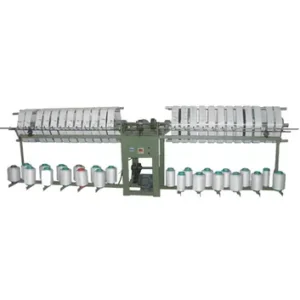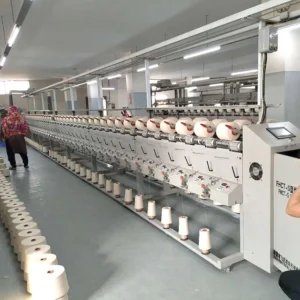The textile industry is one of the world’s largest consumers of water, with dyeing processes alone using trillions of liters annually.
As sustainability becomes a priority for both brands and consumers, reducing water usage in textile dyeing has never been more important.
This article explores innovative techniques and technologies that are helping the fashion industry cut water consumption without compromising quality or color vibrancy.
Why Is Water Conservation Critical in Textile Dyeing?
The Fashion Industry’s Massive Water Footprint
The fashion industry is notorious for its extensive use of water, especially in the textile dyeing process. It is estimated that traditional dyeing methods can consume up to 200 tons of water for every ton of fabric produced.
This staggering figure not only highlights the industry’s significant water footprint but also raises serious concerns about global water scarcity.
As populations grow and climate change exacerbates drought conditions, the demand for fresh water becomes increasingly critical, making it essential for the fashion industry to adopt more sustainable practices.
Pollution from Wastewater
Another pressing issue linked to water use in textile dyeing is the pollution stemming from untreated wastewater.
Many dyeing facilities release toxic runoff into nearby rivers and groundwater, leading to severe environmental degradation.
This contamination not only harms aquatic ecosystems but also poses health risks to communities situated near manufacturing hubs.
The presence of hazardous chemicals in water sources can affect drinking water quality and disrupt local agriculture, highlighting the urgent need for improved wastewater management and treatment solutions in the industry.
Consumer Demand for Sustainable Practices
As awareness of environmental issues grows, consumers are increasingly seeking out brands that prioritize sustainability in their production processes.
Eco-conscious shoppers are more likely to support companies that adopt water-saving techniques and demonstrate a commitment to reducing their environmental impact.
This shift in consumer behavior is prompting many fashion brands to rethink their dyeing practices and invest in technologies that minimize water usage.
And More:
- Innovative Strategies for Reducing Water Usage in Textile Manufacturing
- The Benefits of Using Organic Materials in Textile Production
- How Can Textile Factories Reduce Their Carbon Footprint?
What Are the Most Water-Intensive Steps in Dyeing?
Fabric Pretreatment
The initial step in the dyeing process involves fabric pretreatment, which includes scouring and bleaching textiles.
This stage is crucial for removing impurities and preparing the fabric to absorb dye effectively. However, it is also one of the most water-intensive processes in textile production.
Significant volumes of water are required to achieve the desired level of cleanliness, leading to increased water consumption before the actual dyeing begins.
The Dye Bath Process
The dye bath process is perhaps the most recognized method of dyeing fabrics, where textiles are immersed in a solution of water mixed with dyes and various chemicals.
This immersion technique is widely used due to its effectiveness in achieving vibrant colors and uniform finishes.
The reliance on this traditional method raises questions about its sustainability, prompting the industry to explore alternative dyeing techniques that require less water.
Post-Dyeing Rinsing
After the dyeing process, multiple rinses are necessary to remove excess dye from the fabric.
The repeated washing required to ensure that no residual dye remains can consume significant amounts of water, compounding the already high water footprint of the dyeing process.
Addressing this step is essential for reducing the textile industry’s water consumption and mitigating its environmental impact.
How Can Brands Reduce Water Use in Conventional Dyeing?
Optimizing Dye Recipes
One effective strategy for reducing water consumption in textile dyeing involves optimizing dye recipes.
High-exhaustion dyes are specifically designed to maximize the uptake of color during the dyeing process, meaning that less dye remains in the water after the fabric has been dyed.
This characteristic significantly decreases the need for extensive rinsing, which is one of the most water-intensive steps in the dyeing process.
Recycling and Reusing Water
Implementing closed-loop systems in dyeing facilities presents another innovative solution to minimizing water waste.
These systems filter and treat water used in the dyeing process, allowing it to be reused multiple times.
Investing in such technologies can lead to more sustainable manufacturing practices and lessen the fashion industry’s overall water footprint.
Low-Liquor-Ratio Dyeing
Another promising method for conserving water in textile dyeing is the use of low-liquor-ratio dyeing machines.
These advanced machines are engineered to operate with minimal water while still ensuring even color distribution across the fabric.
This technique not only addresses water scarcity issues but also aligns with the growing demand for sustainable practices in the fashion industry.
What Waterless Dyeing Technologies Exist Today?
Air-Dyeing Technology
Air-dyeing technology represents a groundbreaking advancement in the textile dyeing industry.
This innovative method utilizes air instead of water to transfer dyes onto fabric, drastically reducing water consumption.
The ability to achieve vibrant colors without the extensive water use associated with conventional techniques positions air-dyeing as a compelling solution for sustainable fashion.
Supercritical CO₂ Dyeing
Supercritical CO₂ dyeing is another revolutionary technology that completely removes water from the dyeing equation.
In this process, pressurized carbon dioxide is used as a solvent for dyes, allowing for efficient dyeing while avoiding water altogether.
This method not only conserves water but also produces vibrant colors that meet the high standards of the textile industry.
Digital Printing
Digital printing, particularly inkjet textile printing, is transforming the way fabrics are dyed.
This technique allows for precise application of dyes directly onto the fabric, significantly reducing water waste compared to traditional dyeing methods.
Estimates suggest that digital printing can decrease water usage by up to 95%, making it an incredibly efficient option for brands striving for sustainability.
How Does Cold Dyeing Save Water?
Eliminating Heat-Intensive Processes
Cold dyeing techniques, such as cold pad batch dyeing, operate at room temperature, which significantly reduces the need for heat-intensive processes.
Traditional dyeing methods often require boiling water or high-temperature settings, leading to excessive energy and water consumption.
This approach not only conserves resources but also lowers the carbon footprint associated with textile production, contributing to a more environmentally friendly industry.
Reduced Rinsing Needs
One of the key advantages of cold dyeing is the reduction in dye wastage during the process.
Since cold dyeing techniques are designed to maximize dye absorption, less dye is left in the water after the initial dyeing is completed.
This translates to significant water savings, as rinsing is one of the most water-intensive steps in dyeing. Fewer rinses mean lower overall water consumption, making cold dyeing an efficient alternative for sustainable textile production.
Compatibility with Natural Fibers
Cold dyeing methods are particularly well-suited for natural fibers such as cotton and linen, which are commonly used in sustainable fashion.
These fabrics respond effectively to cold dyeing techniques, allowing for vibrant color results without the environmental costs associated with traditional dyeing methods.
The compatibility of cold dyeing with sustainable fabrics further enhances its appeal, as it supports the growing demand for eco-friendly textiles.
Can Natural Dyes Help Reduce Water Pollution?
Biodegradable Formulations
Natural dyes offer a significant advantage over synthetic dyes in terms of environmental impact, particularly when it comes to water pollution.
This characteristic reduces the potential for harm to waterways and aquatic life, making natural dyes a more sustainable option for textile dyeing.
As brands increasingly seek to minimize their environmental footprint, the use of natural dyes can play a crucial role in promoting cleaner water sources.
Lower Chemical Content
The formulation of natural dyes typically includes fewer toxic additives compared to their synthetic counterparts.
This lower chemical content means that wastewater generated during the dyeing process requires less treatment before it can be safely released into the environment.
With fewer hazardous substances present in the wastewater, the risk of contaminating rivers and groundwater is significantly reduced.
Supporting Sustainable Agriculture
Many natural dyes are derived from plants that thrive with lower irrigation requirements than traditional cotton farming.
This relationship between natural dye production and sustainable agriculture highlights the environmental benefits of using these dyes.
Supporting these agricultural methods not only aids in water conservation but also promotes biodiversity and healthier ecosystems, making natural dyes a holistic choice for environmentally conscious brands.
What Role Do Certifications Play in Water-Smart Dyeing?
Global Organic Textile Standard (GOTS)
The Global Organic Textile Standard (GOTS) plays a crucial role in promoting sustainable practices within the textile industry, particularly regarding water management.
GOTS-certified dyes are subject to strict regulations that govern wastewater treatment and set limits on water usage during production.
This certification ensures that manufacturers adhere to environmentally friendly practices, which significantly reduces the negative impact on local water sources.
OEKO-TEX® ECO PASSPORT
The OEKO-TEX® ECO PASSPORT certification is another important standard that focuses on ensuring the safety of textile products, including dyes used in the manufacturing process.
Dyes that carry this certification are tested and verified to be free from hazardous substances that could pose risks to human health and the environment.
This commitment to eliminating harmful chemicals not only safeguards consumers but also helps reduce the pollution of water sources during dyeing.
ZDHC (Zero Discharge of Hazardous Chemicals)
The ZDHC (Zero Discharge of Hazardous Chemicals) initiative encourages brands to adopt cleaner and more sustainable dyeing processes.
Companies that follow ZDHC guidelines commit to minimizing the impact of their operations on water resources, including reducing water consumption and preventing the discharge of hazardous chemicals.
This commitment fosters a culture of accountability and responsibility within the industry, driving innovation and improvements in dyeing practices.
Supporting brands aligned with ZDHC principles allows consumers to champion efforts that prioritize water preservation and environmental stewardship.
Also Read:
How to Reduce Chemical Usage in Textile Manufacturing
How Can Consumers Support Water-Efficient Dyeing?
Choosing Brands with Transparent Practices
Consumers can play a significant role in promoting water-efficient dyeing by choosing brands that prioritize transparency in their practices.
Companies that openly disclose their water-saving dyeing methods demonstrate a commitment to sustainability and accountability.
When consumers actively seek out these brands, they send a clear message that eco-friendly practices are valued and necessary.
This demand for transparency encourages more brands to adopt sustainable practices and share their efforts, ultimately contributing to a more responsible fashion industry.
Prioritizing Quality Over Quantity
Another way consumers can support water-efficient dyeing is by prioritizing quality over quantity when making clothing purchases.
Opting for fewer, high-quality garments that are designed to last longer helps reduce the overall demand for water-intensive production processes.
This mindful approach not only conserves water but also minimizes waste and promotes a more sustainable consumption model.
Supporting Innovation in Sustainable Fashion
Consumer interest in sustainable fashion can drive brands to invest in innovative water-saving technologies, such as waterless dyeing methods.
When consumers express support for brands that prioritize sustainability, they motivate companies to explore and implement cutting-edge solutions that reduce water usage in dyeing.
This collective push for innovation helps accelerate the transition to more responsible practices within the industry.
Supporting brands that focus on water-efficient technologies ultimately leads to a more sustainable textile sector that respects and conserves vital water resources.
Conclusion
Reducing water usage in textile dyeing has become an essential priority for achieving a sustainable future in fashion.
The industry is evolving, adopting waterless dyeing technologies and smarter rinsing techniques to meet pressing environmental challenges.
Embracing this shift is not just beneficial for the environment; it is crucial for ensuring the long-term viability of our planet’s water resources.












